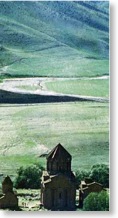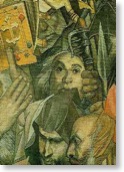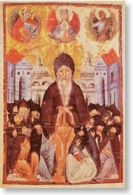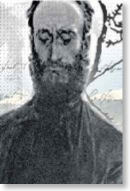ARMENIAN LANGUAGE AND
EDUCATION


Although Armenian institutions of higher education were primarily monasteries and religious centers, “earthly” subjects such as natural sciences, medicine, music or astronomy were not excluded from the curriculum. The legendary David the Invincible (6th-7th) and his works in philosophy and rhetoric were taught throughout the region. In the 7th century, Anania Shiragatsi wrote about nature and mathematics as well as planetary motion and the periodicity of lunar and solar eclipses. Accepting the roundness of the earth, Shiragatsi speculated that the sun illuminates both spheres of the earth and the moon, and the moon has no natural light but reflects the light of the sun.


The Genocide of 1915, perpetrated by the Turks, put an end to this tradition. Perhaps Gomidas Vartabed (1869-1939), whose immeasurable contributions in the field of Armenian folkloric and secular music is unparalleled, was the last in a long lineage of Vartabeds whose impact on the cultural patrimony of Armenians cannot be emphasized enough.
Language is the blood of the soul into which
thoughts run and out of which they grow.
Oliver
Wendell Holmes